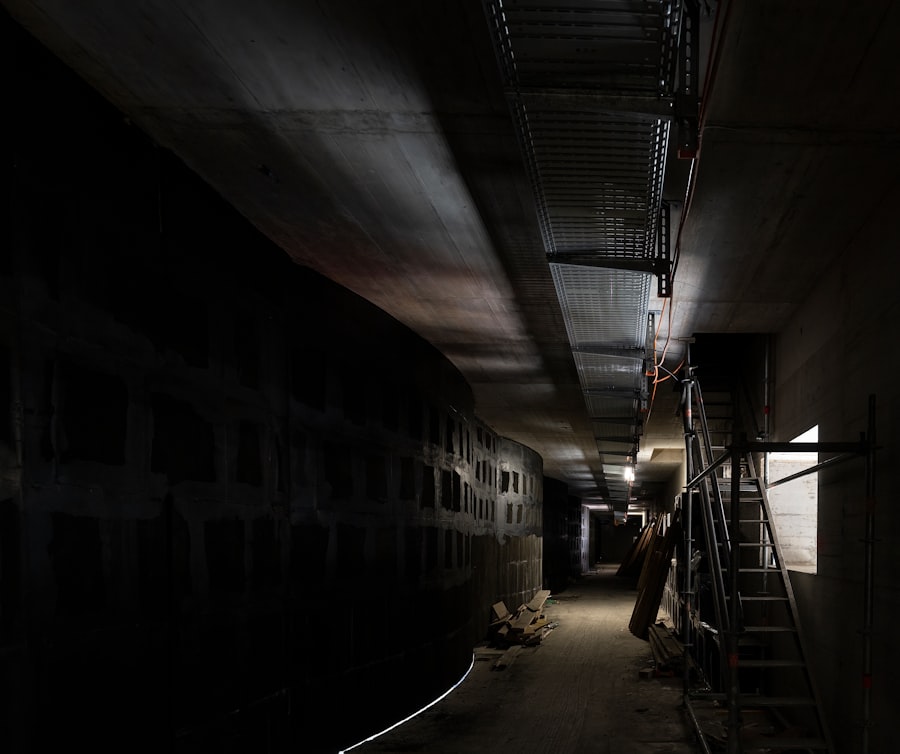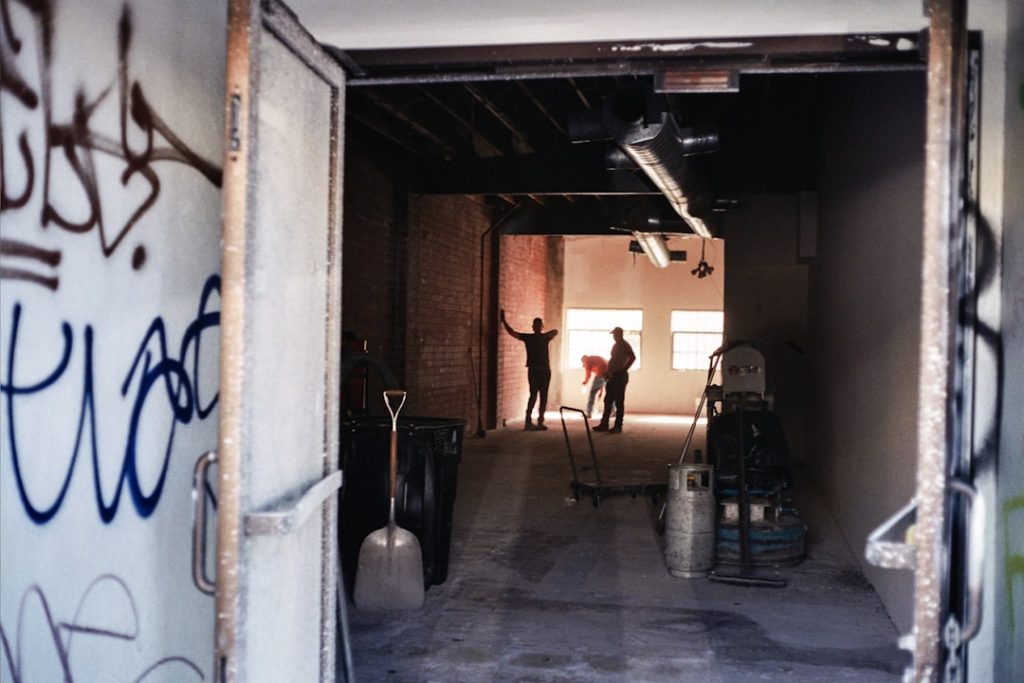Renovating your basement can transform an underutilized space into a valuable asset for your home. One of the most significant benefits is the potential for increased property value. A finished basement can add considerable square footage to your home, making it more appealing to prospective buyers.
According to the National Association of Realtors, a well-executed basement renovation can yield a return on investment of up to 70%. This means that not only do you get to enjoy the space while you live in your home, but you also enhance its marketability when it comes time to sell. Beyond financial gains, a renovated basement can significantly improve your quality of life.
It offers a versatile area that can serve multiple purposes, from a cozy family room to a home office or even a guest suite. This flexibility allows homeowners to tailor the space to their specific needs, accommodating everything from children’s play areas to personal hobbies. Additionally, a finished basement can provide a sanctuary away from the hustle and bustle of daily life, offering a quiet retreat for relaxation or entertainment.
Key Takeaways
- Renovating your basement can add valuable living space to your home and increase its overall value.
- Finding the right contractor is crucial for a successful basement renovation, so be sure to do thorough research and check references.
- Designing your dream basement space involves careful planning and consideration of your family’s needs and lifestyle.
- Understanding the costs of basement renovation upfront can help you budget and avoid any unexpected expenses.
- Proper insulation and waterproofing are essential for maintaining a comfortable and dry basement environment.
Finding the Right Contractor for Your Basement Renovation
Selecting the right contractor is crucial for the success of your basement renovation project. Start by conducting thorough research; seek recommendations from friends, family, or neighbors who have recently completed similar projects. Online platforms such as Angie’s List or HomeAdvisor can also provide valuable insights and reviews about local contractors.
Once you have a shortlist, it’s essential to interview potential candidates to gauge their experience and expertise in basement renovations specifically. During the interview process, ask for references and examples of previous work. A reputable contractor should be able to provide a portfolio showcasing their past projects, particularly those that align with your vision.
Additionally, ensure that they are licensed and insured, as this protects you from potential liabilities during the renovation process. Communication is another critical factor; choose a contractor who listens to your ideas and concerns and is willing to collaborate closely throughout the project. Establishing a good rapport can lead to a smoother renovation experience and ultimately result in a space that meets your expectations.
Designing Your Dream Basement Space

Designing your dream basement involves careful consideration of both aesthetics and functionality. Begin by defining the primary purpose of the space. Will it be a recreational area, a home office, or perhaps an additional living suite?
Once you have a clear vision, you can start planning the layout and design elements that will bring that vision to life. Consider factors such as traffic flow, furniture placement, and how the space will be used on a daily basis. Incorporating design elements that reflect your personal style is essential for creating an inviting atmosphere.
Choose a color palette that complements the rest of your home while also considering the unique characteristics of the basement environment. For instance, lighter colors can help make the space feel larger and more open, while darker hues can create a cozy ambiance. Additionally, think about incorporating various textures through materials like wood, stone, or fabric to add depth and interest to the design.
Lighting is another critical aspect; layering different types of lighting—ambient, task, and accent—can enhance both functionality and aesthetics.
Understanding the Costs of Basement Renovation
| Cost Category | Average Cost |
|---|---|
| Design and Planning | 2,000 – 5,000 |
| Permit and Inspection | 1,000 – 2,000 |
| Materials | 10,000 – 20,000 |
| Labor | 15,000 – 30,000 |
| Fixtures and Finishes | 5,000 – 10,000 |
| Contingency (10-20% of total cost) | 5,000 – 15,000 |
The costs associated with basement renovation can vary widely based on several factors, including the size of the space, the extent of the renovation, and the materials used. On average, homeowners can expect to spend between $20,000 and $50,000 for a complete basement remodel. However, this figure can fluctuate significantly depending on whether you are simply finishing an existing space or undertaking more extensive structural changes.
To gain a clearer understanding of potential costs, it’s advisable to create a detailed budget that outlines all aspects of the renovation. This should include expenses for labor, materials, permits, and any unforeseen contingencies that may arise during construction. It’s also wise to consult with your contractor about potential cost-saving measures without compromising quality.
For example, opting for mid-range materials instead of high-end finishes can help keep costs manageable while still achieving an attractive result.
The Importance of Proper Basement Insulation and Waterproofing
Proper insulation and waterproofing are critical components of any successful basement renovation. Basements are often prone to moisture issues due to their location below ground level, making them susceptible to water infiltration and mold growth if not adequately addressed. Investing in high-quality waterproofing solutions can prevent these problems from arising in the first place.
Techniques such as exterior drainage systems, sump pumps, and vapor barriers are essential for keeping moisture at bay. Insulation plays a vital role in maintaining comfortable temperatures within your basement year-round. Without proper insulation, basements can become uncomfortably cold in winter and excessively warm in summer.
Insulating walls and ceilings with materials like foam board or fiberglass batts can help regulate temperature and improve energy efficiency throughout your home. Additionally, well-insulated basements contribute to lower heating and cooling costs over time, making it a wise investment in both comfort and sustainability.
Maximizing Natural Light in Your Basement

One common challenge with basements is their tendency to feel dark and cramped due to limited natural light. However, there are several strategies you can employ to maximize natural light in your renovated space. One effective approach is to install larger windows or egress windows that meet local building codes while allowing more sunlight to enter.
If structural changes are not feasible, consider using light wells or window wells that can help bring light into smaller windows. In addition to enhancing window size and placement, utilizing reflective surfaces can significantly brighten up your basement. Light-colored walls and ceilings can help bounce light around the room, creating an illusion of spaciousness.
Mirrors strategically placed across from windows can also amplify natural light by reflecting it deeper into the space. Furthermore, incorporating skylights or light tubes can be an excellent way to introduce additional daylight into windowless areas of your basement.
Choosing the Right Flooring for Your Basement
Selecting appropriate flooring for your basement is crucial due to its unique environmental conditions. Traditional flooring options like hardwood may not be suitable because they are susceptible to moisture damage. Instead, consider materials specifically designed for basements such as vinyl plank flooring or tile.
These options are not only durable but also resistant to moisture and easy to maintain. When choosing flooring, think about how you plan to use the space and what kind of aesthetic you want to achieve. For example, if you’re creating a cozy family room or entertainment area, plush carpeting may be an appealing choice for comfort underfoot.
However, if you’re designing a home gym or workshop, hard surfaces like laminate or concrete may be more practical due to their durability and ease of cleaning. Additionally, consider adding area rugs for warmth and style while still allowing for easy maintenance.
Creating a Functional and Stylish Basement Layout
A well-thought-out layout is essential for maximizing both functionality and style in your basement renovation. Start by considering how you want to divide the space into different zones based on its intended use. For instance, if you’re creating a multi-purpose area that includes a lounge space and a home office, think about how these zones will interact with one another while maintaining privacy where needed.
Furniture arrangement plays a significant role in achieving an effective layout. Opt for modular furniture that can be easily rearranged as your needs change over time. Additionally, consider built-in storage solutions that help keep clutter at bay while maintaining an open feel in the room.
Open shelving units or custom cabinetry can provide both storage and display options without overwhelming the space visually. Finally, don’t forget about pathways; ensure there’s enough room for movement between different areas so that your basement remains functional even when fully furnished.



